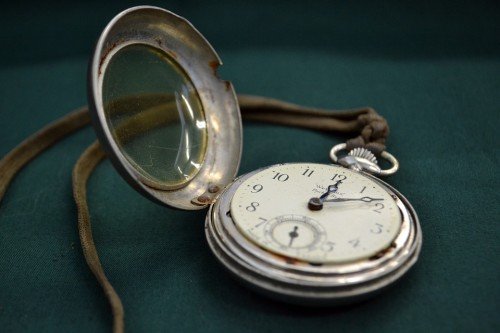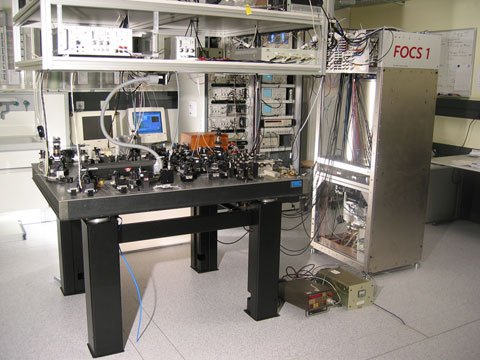Measurements: History of the Second

See also:
Hours, Minutes and Seconds
Ancient Sumerians and Egyptians were dividing the day in 12 parts, between sunrise and sunset.
Why 12 and not 10 or 11? Nobody really know for sure.
The importance of 12 has been attributed to the number of lunar cycles in a year, and also to the fact that humans have 12 finger bones (phalanges) on one hand (three on each of four fingers). It is possible to count to 12 with the thumb acting as a pointer, touching each finger bone in turn.
Several things in our daily life goes by 12: we buy eggs by the dozen, there are 12 inches in a foot, etc ... There is even a word for a dozen dozen: in English: a gross, in French: une grosse.
In any case, the sunlit day was divided in 12 parts. This lead to the division of night and day in 24 parts: the hours.
The word hour comes from Old French ore, from Latin hōra, from Greek ὥρα.
In the Middle Ages, the hour started to be divided in 60 minutes.
Why 60 and no 50 or 100? There is no historical records of the origin of this division. One plausible explanation is that it is coming from the Babylonians that used a base 60 numeration system. This is also why we have 360° (= 6 × 60°) in a circle.
The word minute comes from the Latin phrase "pars minuta prima", meaning "first small part".
In turn, the minute was subdivided into 60 seconds. Second comes from Latin "pars minuta secunda" (second small part).
In turn, the second was subdivided into 60 "thirds" ("pars minuta tiertia"), but this has been abandoned in modern days and replaced by decimal subdivisions of the second.
When I was in elementary school in France in the 1950s, I heard the word "tierce" designating 1/60 of a second.
Definitions of the Second
For a long time, the second has no precise definition.
In 1267, the medieval scientist Roger Bacon, writing in Latin, defined the division of time between full moons as a number of hours, minutes, seconds, thirds, and fourths (horae, minuta, secunda, tertia, and quarta) after noon on specified calendar dates.
For a long time, in the 16th, 17th and 18th centuries, the second was based on mechanical clocks. The first such clocks appeared in the second half of the 16th century.
When the French Revolution defined the first decimal system, they did not include a measure of time.
In 183, the German mathematician Carl Friedrich Gauss proposed a system of units that included the second as a measure of time. This system evolved into the CGS system (centimetre, gram, second) around 1874. The CGS system was gradually replaced by the MKS system (meter, kilogram, second) that was adopted internationally during the 1940s.
In the MKS system of units, the second was defined as 1/86,400 of a mean solar day..
In the 1950s, it has become clear that the Earth's rotation on its own axis was not sufficiently uniform to be used as the base of the measurement of time.
So, in 1960, when the International System of Units was adopted, the second was defined as:
- the fraction 1⁄31,556,925.9747 of the tropical year for 1900 January 0 at 12 hours ephemeris time.
There was no more a fixed relation between the "day" and the second. However, for every day life, the day still has 86,400 seconds.
The definition of the second based on the revolution of the Earth around the Sun did not last very long.
In the 1960s, atomic clocks were built.

FOCS 1, a continuous cold caesium fountain atomic clock in Switzerland
source
So, in 1967, the SI second (the second in the International System of Units) was defined as
- the duration of 9,192,631,770 periods of the radiation corresponding to the transition between the two hyperfine levels of the ground state of the caesium-133 atom
1n 1977, it was specified that this definition applies at the altitude of mean see level.
In 1997, it was further specified that
- this definition refers to a caesium atom at rest at a temperature of zero degree Kelvin (absolute zero)
This is still the official definition of the second today.
There are proposals to redefined the second using optical atomic clocks, but this has not yet been adopted internationally.
Sources:
- https://en.wikipedia.org/wiki/Duodecimal
- https://en.wikipedia.org/wiki/Hour
- https://en.wikipedia.org/wiki/Second
